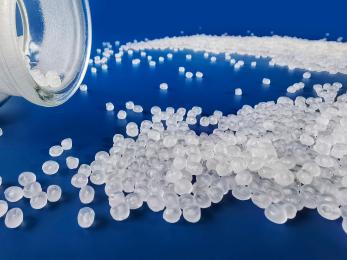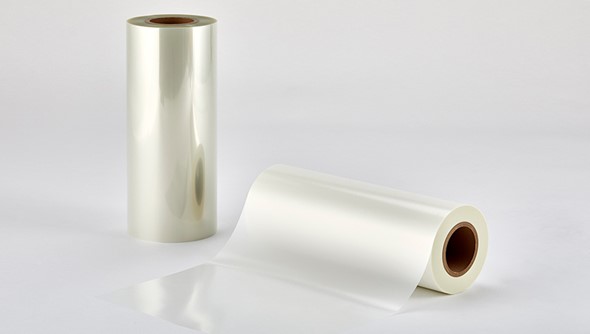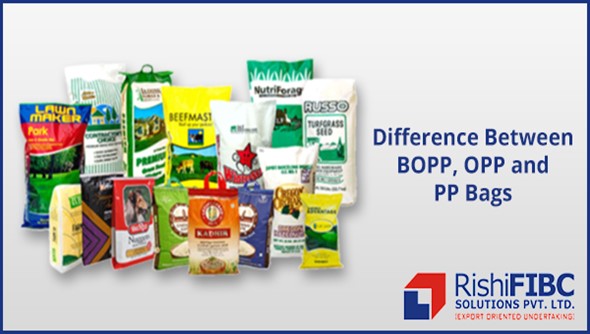-
 Why is Polypropylene used so often?11 24,2022
Why is Polypropylene used so often?11 24,2022Polypropylene is used in both household and industrial applications. Its unique properties and ability to adapt to various fabrication techniques make it stand out as an invaluable material for a wide range of uses. Another invaluable characteristic is polypropylene’s ability to function as both a plastic material and as a fiber (like those promotional tote bags that are given away at events, races, etc). Polypropylene’s unique ability to be manufactured through different methods and into different applications meant it soon started to challenge many of the old alternative materials, notably in the packaging, fiber, and injection molding industries. Its growth has been sustained over the years and it remains a major player in the plastic industry worldwide. At Creative Mechanisms, we have used polypropylene in a number of applications across a range of industries. Perhaps the most interesting example includes our ability to CNC machine polypropylene to include a living hinge for prototype living hinge development. Polypropylene is a very flexible, soft material with a relatively low melting point. These factors have prevented most people from being able to properly machine the material. It gums up. It doesn’t cut clean. It starts to melt from the heat of the CNC cutter. It typically needs to be scraped smooth to get anything close to a finished surface.
-
 What is PP Films ?11 16,2022
What is PP Films ?11 16,2022PROPERTIES Polypropylene or PP is a low cost thermoplastic of high clarity, high gloss and good tensile strength. It has a higher melting point than PE, which makes it suitable for applications that require sterilization at high temperatures. It also has less haze and higher gloss. Generally, the heat-sealing properties of PP are not as good as those of LDPE. LDPE also has better tear strength and low temperature impact resistance. PP can be metallized which results in improved gas barrier properties for demanding applications where long product shelf life is important. PP films are well suited for a broad range of industrial, consumer, and automotive applications. PP is fully recyclable and can be easily reprocessed into many other products for many different applications. However, unlike paper and other cellulose products, PP is not biodegradable. On the upside, PP waste does not produce toxic or harmful by-products. The two most important types are cast unoriented polypropylene (CPP) and biaxially oriented polypropylene (BOPP). Both types have high gloss, exceptional optics, good or excellent heat-sealing performance, better heat resistance than PE, and good moisture barrier properties. Cast Polypropylene Films (CPP) Cast unoriented Polypropylene (CPP) generally finds fewer applications than biaxially oriented polypropylene (BOPP). However, CPP has been steadily gaining ground as an excellent choice in many traditional flexible packaging as well as non-packaging applications. The film properties can be customized to meet specific packaging, performance, and processing requirements. In general, CPP has higher tear and impact resistance, better cold temperature performance and heat-sealing properties than BOPP. Biaxially Oriented Polypropylene Films (BOPP) Biaxially oriented polypropylene or BOPP1 is the most important polypropylene film. It is an excellent alternative to cellophane, waxed paper, and aluminum foil. The orientation increases tensile strength and stiffness, lowers elongation (harder to stretch), and improves the optical properties, and somewhat improves vapor barrier properties. In general, BOPP has higher tensile strength, higher modulus (stiffness), lower elongation, better gas barrier, and lower haze than CPP. APPLICATIONS PP film is used for many common packaging applications such as cigarette, candy, snack and food wraps. It also can be used for shrink wrap, tape liners, diapers and sterile wrap used in medical applications. Because PP has only average gas barrier properties, it often is coated with other polymers such as PVDC or acrylic which greatly improves its gas barrier properties. Due to the low odor, high chemical resistance and inertness, many PP grades are suitable for packaging applications under FDA regulations.
-
 Difference Between BOPP, OPP and PP Bags.11 10,2022
Difference Between BOPP, OPP and PP Bags.11 10,2022The food industry majorly uses BOPP plastic packaging. BOPP bags are easy to print, coat and laminate which makes them suitable for packing products like fresh produces, confectionaries and snacks. Alongwith BOPP, OPP, and PP bags are also used for packaging. Polypropylene is a common polymer among the three used for manufacturing the bags. OPP stands for Oriented Polypropylene, BOPP stands for Biaxially Oriented Polypropylene and PP stands for Polypropylene. All three differ in their style of fabrication. Polypropylene also known as polypropene is a thermoplastic semi-crystalline polymer. It is tough, strong and has high impact resistance. Standup pouches, spout pouches and ziplock pouches are made from polypropylene. It is very difficult to differentiate between OPP, BOPP and PP plastics at first. The difference can be felt by touching as PP is soft whereas OPP is brittle. It is important to understand the use of OPP, PP and BOPP bags in real-world objects for distinguishing them. The PP or polypropene bags are used as non-woven bags. They are treated in order to make them moisture or water absorbent. Diapers, sanitary napkins and air filters among others are common PP products. Similar material is also used for the making of thermal clothing as they provide temperature barrier. OPP bags are transparent in color and have high tensile strength. They are resistant to high temperatures but wrinkle if brought into rough use. Transparent adhesive tapes are made using the same formula. They are hard to tear and OPP bags are used in packing of leather and clothes among others. BOPP bags are crystal clear polyethylene bags. The biaxial orientation gives them transparent look and makes them suitable for branding by printing on the surface. BOPP bags are used for retail packaging. The biaxial orientation increases strength and they can carry heavy loads. These bags are waterproof. The products inside them are protected from moisture for a long period of time. They are the first choice in the cloth packaging industry. PP, OPP and BOPP bags are resistant to acid, alkalies and organic solvents. This is the reason why they are used in packaging industry where storage and transportation under changing atmosphere cannot be avoided. They project the product from moisture and dust like cling films. They can be recycled and their manufacturing involves less carbon output. PP, BOPP and OPP bags are also good from an environmental point of view. Rishi FIBC is a BOPP bag manufacturer and provides it at affordable market prices.
-
 INEOS Announces Expansion of Olefin Capacity to Produce HDPE.10 28,2022
INEOS Announces Expansion of Olefin Capacity to Produce HDPE.10 28,2022Recently, INEOS O&P Europe announced that it will invest 30 million euros (about 220 million yuan) to transform its Lillo plant in the port of Antwerp so that its existing capacity can produce unimodal or bimodal grades of high-density polyethylene (HDPE) to Meet the strong demand for high-end applications in the market. INEOS will leverage its know-how to strengthen its leading position as a supplier to the high-density pressure piping market, and this investment will also enable INEOS to meet the growing demand in applications critical to the new energy economy, such as: transportation Networks of pressurized pipelines for hydrogen; long-distance underground cable pipeline networks for wind farms and other forms of renewable energy transportation; electrification infrastructure; and processes for carbon dioxide capture, transportation, and storage. The unique combination of properties offered by INEOS bimodal HDPE polymers means that many of these products can be safely installed and operated for at least 50 years. They also provide a more efficient, lower-emission solution for transporting vital utilities and goods between European cities. This investment also demonstrates INEOS O&P Europe's commitment to a prosperous circular economy. After the upgrade, the Lillo plant will increase the production of highly engineered polymers that INEOS combines with recycled plastic waste to form the Recycl-IN range, enabling processors and brand owners to produce products that satisfy consumers more Products that use recycled materials demand, while continuing to deliver the high-performance specifications they expect.




